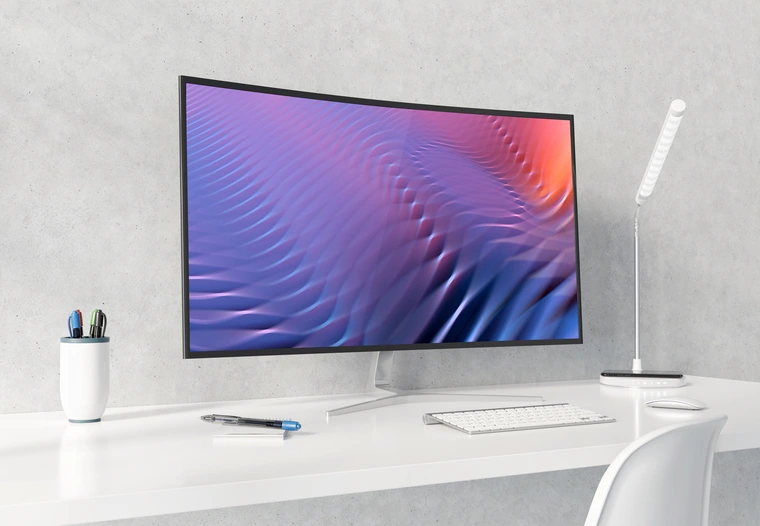.jpg&w=768&h=576)
Adolescent idiopathic scoliosis is a multi-factorial condition involving both genetic and environmental risk factors. Neither seems to be enough to cause the condition on their own, but it can be positively devastating when they do combine to form progressive scoliosis. Two separate questions keep popping up in regards to scoliosis; 1. Why does it occur in some child and not in others? 2. Why do some spinal curves progress and others do not?
Genetic factors + Environmental factors = Progressive Scoliosis
1. Initiating/inducing factors.....which is thought to involve a genetic pre-disposition....undetected neurological development/dysfunction which affects control of posture and coordinated movements in relation to the central nervous system body schema.... ('Body scheme' or 'body set' is the neural representation in our brainstem of our body. It is a sort of reference frame for our brain.
fMRI studies can show us the we can increase activity there by doing certain activities.)
These include multiple theories, which I'll elaborate more on individually later in this article.
- Rotational preconstraint theory
- Uncoupled spinal neuro-osseous growth (The String and Spring Theory)
- Brain, nervous system, and skull concepts
- Neuro-Osseous timing of maturation theory (NOTOM)
- Transverse plane pelvic rotation, skeletal asymmetric, and the "developmental theory: timing of maturation from the top-down to bottom-up organization of postural control.
2. Curve progression factors (which is generally thought to involve a mechanical process (torsion, vicious cycle, dorsal shear forces, etc) with eccentric loading (having axis away from the center) and vertebral growth modulation....AKA:Hueter-Volkmann principle. These are generally accepted to have both neural and osseous components.
These include theories on curve progression that appear after the initial onset of AIS.
- Relative Anterior Spinal Overgrowth (RASO) (although this could possibly be controlled via genetic factors in some AIS cases)
- Thoracospinal concept - girls with right thoracic adolescent AIS only
- Origin in contracture at the hips
- Osteopenia - a risk factor for curve progression?
- Melatonin deficiency
- Platelet calmodulin dysfunction
- Biomechanical spinal growth modulation
1. Rotational preconstraint theory
This theory is pretty straight forward and not too complex...on the surface. It basically states that paravertebral muscle imbalance with interference of the postural reflexes and body weighted related vertical loading lead the formation of scoliosis. The lingering question is... what causes the interference of the postural reflexes?
2. Uncoupled spinal neuro-osseous growth (The String and Spring Theory)
Biomechanically speaking, the continuous axial tissue tract of the pons, medulla oblongata (the CNS postural control centers) and spinal cord are all functionally linked together and anchored vertically from the skull to the caude equina at the base of the spine. It is also anchored laterally through out the spine by dentiulate ligaments, nerve roots and nerve sleeves. Take home message: The spine is tied down in the spine pretty tightly.
Alf Breig's 1978 work shows changes in relative lengths of spinal canal and cord CAN lead to pathologic axial tension. JD Reid's research confirms this when his research found physiological lengthening of the cord chiefly between C2-T1 up to a maximum of 17.6% in flexion (AKA: reversal of the normal cervical curve). Essentially, an acquired spinal cord tethering is the result from a loss of the normal side view cervical curvature.
Roth built off this information in 1981 when he speculated that AIS is a disproportion of vertebro-neuro growth due to either a short spinal cord or a too rapid growth spurt of the spine. In this spring/string model, he found that shortening of a string running though a spring model (think of a slinky with a string running though it) hindered elongation of the spring resulting in a scoliotic deformity.
Porter supported the uncoupled neuro-osseous growth concept of AIS being a physical manifestation of the mal-adaption of the growing immature spine to the tether created by the short spinal cord. This evidence for this was the finding that the conus medullaris (the end of the spinal cord) position is NOT significantly different from that of a normal spine.
Dr. Chu re-examined the Roth-Porter theory via an MRI study (comparing AIS patients with severe curvatures vs normal subjects) in 2007. They found the vertebral column in the AIS population was significantly longer, yet the there was no detectable change in spinal cord length. The speculated that the initiation and progression of AIS result from vert. column overgrowth through a mal-adapation of the spine to the subclinical tether of a relatively short spinal cord.
3. Brain, nervous system, and skull concepts
Dr. Chu (the same researcher who re-investigated the uncoupled neuro-osseous growth concept) developed a concept of AIS progression with 6 linked and overlapping processes a follow...
1. Longer latency somato-sensory evoked potentials (SSEPs) via a higher CNS disturbance producing visuo-spatial perceptional impairment, motor adaptation, and learning deficits which lead to faulty recalibration of the proprioceptive (bodily awareness in space) from axial musculature.
2. leading to impaired balance control, with...
3. Low lying cerebellar tonsils due to acquired spinal cord tethering, together with...
4. Other intracerabral structural abnormalities (Ex: abnormal skull base and vault) that could contribute to...
5. Inappropriate postural adjustment during...
6. The adolescent growth spurt that leads to...
7. Progressive AIS.
4. Neuro-Osseous timing of maturation theory (NOTOM)
This theory was introduced in 2002 by Burwell and Dangerfield and it suggests that the maturation of postural mechanisms in the CNS may be complete about the same time in boy and girls and the higher prevalence of progressive AIS in girls may be the result of entering there adolescent growth spurt in postural immaturity vs boys whose later adolescent growth spurt occurs post postural maturity.
Essentially, they are viewing the problem as a dis-coordination between the Osseous (bone) escalator (increasing skeletal size, changing skeletal shape, and relative mass of the different body segments) and the neural escalators (postural maturation with the CNS body schema being recalibrated as it continually adjusts to skeletal enlargement, shape, and relative mass changes to enable it to coordinate motor actions.
5. Transverse plane pelvic rotation, skeletal asymmetrics, and the "developmental theory: timing of maturation from the top-down to bottom-up organization of postural control.
This theory demonstrates correlation between thoracic curvatures and pelvic rotation in the same transverse plane. They speculate that the feet, pelvis, and "bottom-up" organization of postural control emerges prior to postural control and the "top-down" postural control re-organizes around age 7. It is possible that a dis-coordination of timing between the top-down (visual and vestibular) from the "bottom-up" (feet) organization of postural control could serve as the initiation and progression of AIS.
6. Relative Anterior Spinal Overgrowth (RASO)
Relative Anterior Spinal Overgrowth (RASO) essentially states that in many AIS cases the anterior elements (vertebral body) are longer than the posterior elements (the posterior joint complex) resulting in a structural hypo (decreased) thoracic kyphosis (the normal reversed side view curve seen in the mid back area).
It is not clear if this phenomenon is the result of an intrinsic abnormality of skeletal growth in patients with AIS which may genetic or an adaptation to biomechanical bone stress....which is the more accepted premise thus far... via the Hueter-Volkmann principle(bone under stress grows slower then bone not under stress) which would mean AIS has primarily a mechanical basis (aka: Dorsal shear forces theory).
The dorsal shear forces theory states the initial event is a lordotic segment in the thoracic spine with the spinal rotation and cobb angle being created by secondary torque forces from the posterior musculo-ligamentous structures.
Castelein has outlined 6 link/overlapping processes of the dorsal shear forces leading to AIS.
1. Upright human posture
2. Backward inclination of the vertebra in the sagittal plane (lordotic segment in the thoracic spine) creates...
3. Dorsal shear forces that render the facet joints inoperative and introduce...
4. Axial rotational stability enhancing slight asymmetries in the transverse plane with already exist.
5. Asymmetric loading of the posterior part of the vert. lead to asymmetric growth in 3-D of the pedicles, vert bodies, arches in accordance with the Hueter-Volkmann effect.
6. Progressive AIS
7. Thoracospinal concept - girls with right thoracic adolescent AIS only
Dr Sevastik developed a "thoracospinal concept" based on experimental, clinical, and anatomical data and it only applies to females with right thoracic curves.
His 6 steps has a linear causality mechanism...
1. Dysfunction of the autonomic nervous system (which is responsible for involuntary neurological postural control)
2. Increase vasularity of the left anterior hemithorax
3. Overgrowth of the left peri-apical ribs which...
4. disturbs the equilibrium of the forces that determine normal alignment of the thoracic spine, in a putative growth conflict, that...
5. triggers the thoracospinal deformity simultaneously in the three planes.
6. Biomechanical spinal growth modulation.
Basically, he is staying that asymmetrical blood flow between the left (increased) and right (decreased) to the anterior chest wall which causes and elongation of the left ribs.
8. Origin in contracture at the hips
Dr. Karski developed this concept of AIS orgin/progression based on 3 step linear process.
1. Hip abduction (external rotation)...which equates to a limitation of internal hip rotation...mostly of the right hip.
2. Disturbance of growth of the pelvi-sacral lumbar region with development of a left lumbar curvature.
3. Development of a compensatory right thoracic curvature.
Based off this theory he developed 3 groups with varying degrees of hip contractor to explain the "S" and "C" curve patterns.
9. Osteopenia- a risk factor for curve progression?
Low bone calcium has been found and noted in approximately 50% of AIS females in which their curve progressed 6 degrees or more and especially in the femoral neck of the hip on the side of the curve convexity (the outside of the curve) due to more weight bearing loading on the side of curve concavity (the inside of the

- Solutions for your career oriented certification. PDf, Practice test software. Get latest and Actual Exam Dumps For Best Results In Final Exam.

- When studying for a major exam, it is important to look for every tool or asset that could benefit you on the day of the test. Most exams from vendors such as C

- The objects themselves have no color, but when illuminated by light, they absorb part of the light waves, and part of them reflect.

- If you had mentioned cryptocurrency or blockchain some years ago, a type of underground currency would have popped up in my head.